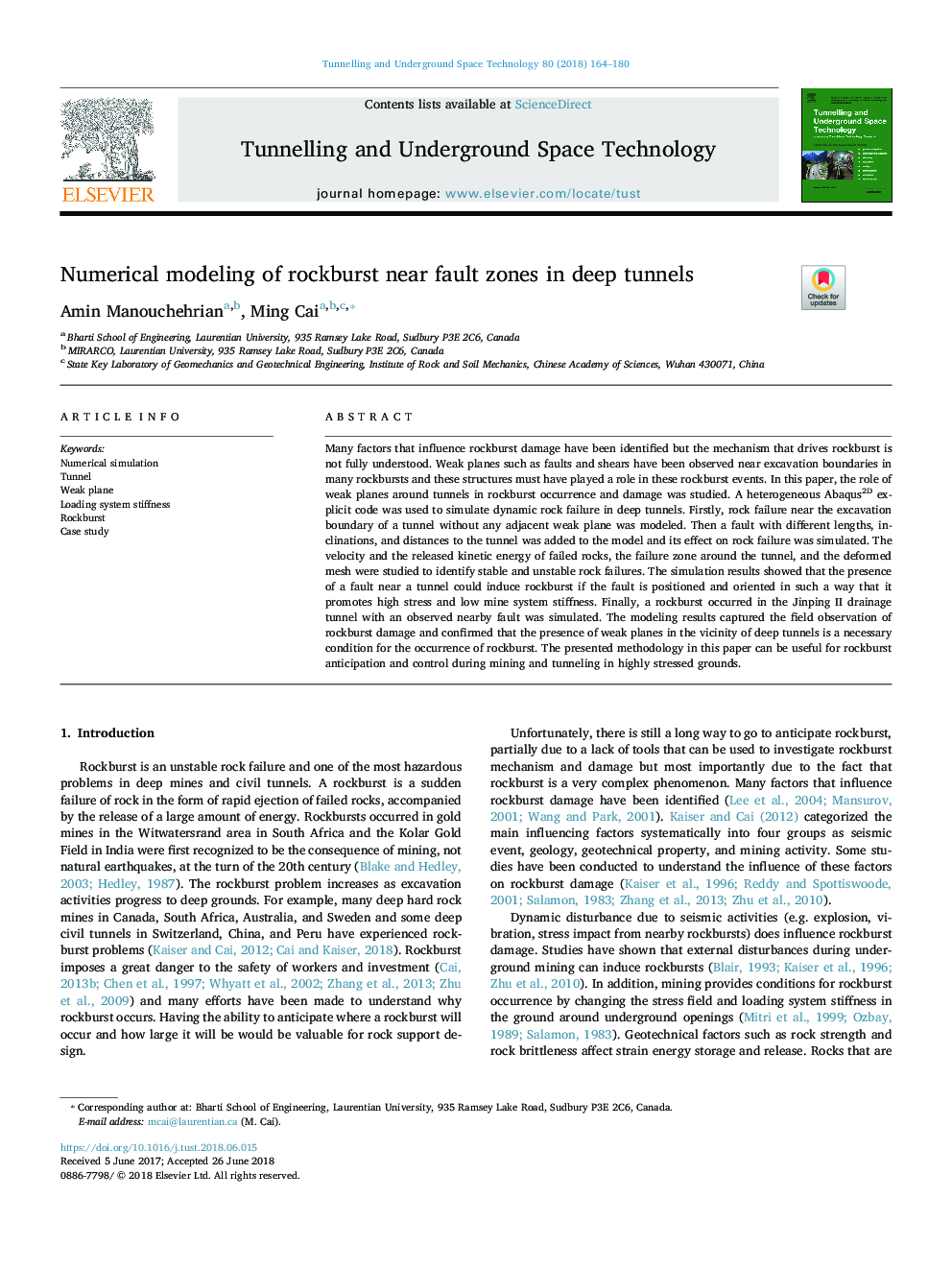| Article ID | Journal | Published Year | Pages | File Type |
|---|---|---|---|---|
| 6782319 | Tunnelling and Underground Space Technology | 2018 | 17 Pages |
Abstract
Many factors that influence rockburst damage have been identified but the mechanism that drives rockburst is not fully understood. Weak planes such as faults and shears have been observed near excavation boundaries in many rockbursts and these structures must have played a role in these rockburst events. In this paper, the role of weak planes around tunnels in rockburst occurrence and damage was studied. A heterogeneous Abaqus2D explicit code was used to simulate dynamic rock failure in deep tunnels. Firstly, rock failure near the excavation boundary of a tunnel without any adjacent weak plane was modeled. Then a fault with different lengths, inclinations, and distances to the tunnel was added to the model and its effect on rock failure was simulated. The velocity and the released kinetic energy of failed rocks, the failure zone around the tunnel, and the deformed mesh were studied to identify stable and unstable rock failures. The simulation results showed that the presence of a fault near a tunnel could induce rockburst if the fault is positioned and oriented in such a way that it promotes high stress and low mine system stiffness. Finally, a rockburst occurred in the Jinping II drainage tunnel with an observed nearby fault was simulated. The modeling results captured the field observation of rockburst damage and confirmed that the presence of weak planes in the vicinity of deep tunnels is a necessary condition for the occurrence of rockburst. The presented methodology in this paper can be useful for rockburst anticipation and control during mining and tunneling in highly stressed grounds.
Related Topics
Physical Sciences and Engineering
Earth and Planetary Sciences
Geotechnical Engineering and Engineering Geology
Authors
Amin Manouchehrian, Ming Cai,
